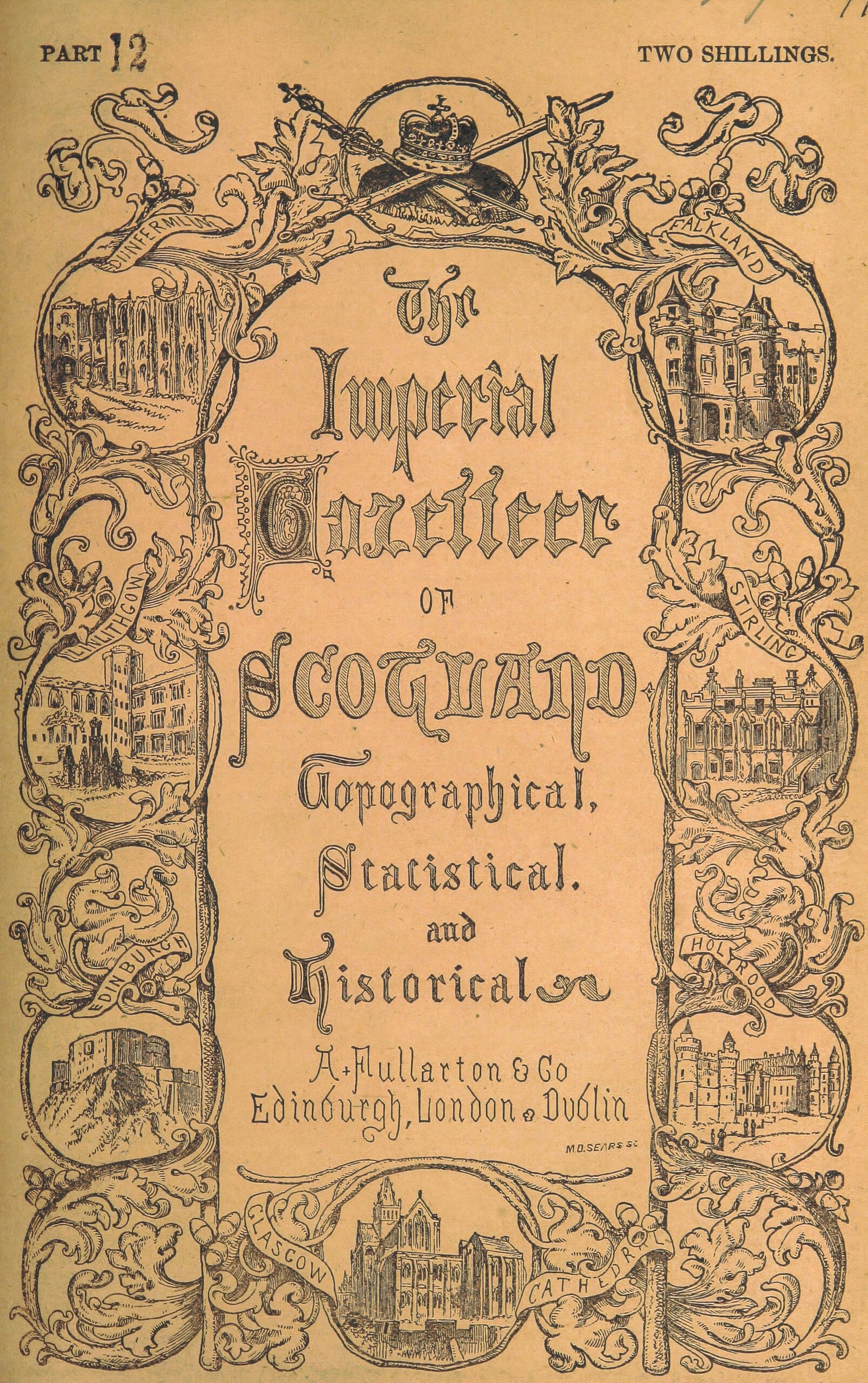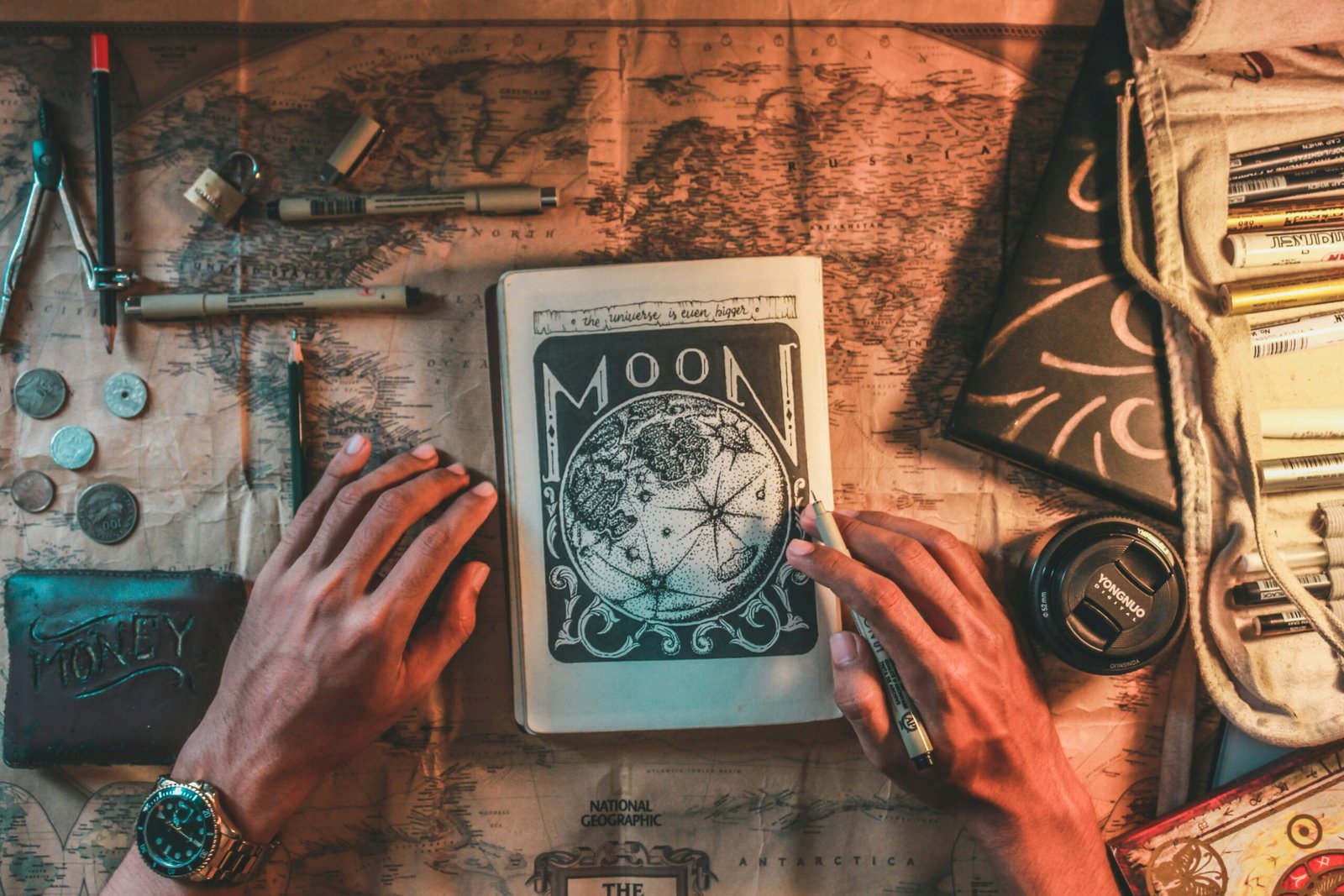Is Modern Technology Killing the Mystery of Magicians and Magic Entertainment?

Photo by <a href="https://unsplash.com/@britishlibrary" rel="nofollow">British Library</a> on <a href="https://unsplash.com/?utm_source=hostinger&utm_medium=referral" rel="nofollow">Unsplash</a>
Magic, as an art form, has a storied history that spans millennia, evolving from ancient rituals to the sophisticated performances we witness today. Initially, magic was often intertwined with religious and cultural ceremonies, serving as a conduit for communities to explore the mystical and the unknown. Over time, magic transitioned from these sacred spaces into public arenas, becoming a form of entertainment that captivated audiences on street corners and in bustling marketplaces.
As societies progressed, so too did the art of magic. The 19th century, often referred to as the Golden Age of Magic, saw the rise of iconic magicians like Harry Houdini and Jean Eugène Robert-Houdin. These performers revolutionized magic by incorporating theatrical elements, elaborate stage setups, and intricate illusions that left audiences in awe. Magic shows became grand spectacles, often hosted in opulent theaters and drawing large crowds eager to be dazzled by feats that defied explanation.
With the advent of the 20th century, magicians continued to innovate, leveraging advancements in technology to enhance their performances. The introduction of electric lighting, elaborate stage machinery, and eventually, digital effects, allowed magicians to push the boundaries of what was possible. Television brought magic into the living rooms of millions, making stars out of magicians who could now reach a global audience. This period of rapid technological advancement set the stage for the magic industry as we know it today.
However, as technology becomes increasingly intertwined with our daily lives, questions arise about its impact on the mystery and allure of magic. Modern technology, with its capacity to create seamless illusions and instant access to information, challenges magicians to continuously adapt and innovate. This historical context of adaptation and evolution is crucial for understanding how contemporary magicians navigate the delicate balance between embracing new technologies and preserving the enigmatic essence of their craft.
The Role of Technology in Magic Performances
Throughout history, magicians have embraced technology to elevate their craft, blending innovative tools with traditional sleight of hand to create mystifying performances. Early magicians utilized rudimentary technologies such as mirrors, which played a crucial role in the famed “Pepper’s Ghost” illusion, where a phantom-like figure would appear on stage. Smoke machines further enhanced the ethereal quality of these illusions, creating an atmosphere of mystique and suspense. Advanced lighting techniques allowed magicians to manipulate shadows and visibility, adding layers of complexity to their acts.
In the contemporary landscape, digital technology has revolutionized magic entertainment. Projection mapping, a technique where images are projected onto three-dimensional surfaces, enables magicians to transform ordinary objects into dynamic visual spectacles. This technology allows the audience to witness seemingly impossible transformations and animations that seamlessly blend into the performance. Similarly, holograms have become a staple in modern magic shows, offering the ability to project life-like, three-dimensional images that interact with the magician, creating a sense of wonder and disbelief.
Moreover, robotics have found their way into the magician’s toolkit, bringing a new level of precision and surprise to magic acts. Robots can be programmed to perform intricate movements or execute tricks that require impeccable timing, often surpassing the capabilities of human assistants. This integration of robotics not only dazzles the audience with their mechanical prowess but also adds an element of futuristic intrigue to the performance.
As magicians continue to explore and integrate these technological advancements, the boundary between reality and illusion becomes increasingly blurred. The fusion of traditional magic techniques with cutting-edge digital technology ensures that magic entertainment remains a dynamic and evolving art form, captivating audiences with ever more sophisticated and mesmerizing performances. By embracing these innovations, magicians can craft experiences that are not only visually stunning but also profoundly engaging, ensuring that the magic of illusion continues to enchant and inspire.
The advent of the internet has fundamentally transformed many aspects of our lives, including how we perceive and interact with the art of magic. The wide proliferation of information online has made it increasingly easier for the general public to uncover the secrets behind magic tricks. This ease of access to information, while democratizing knowledge, raises concerns about whether it diminishes the sense of wonder and mystery that traditionally surrounds magic entertainment.
Platforms like YouTube and social media have played a significant role in this shift. On YouTube, countless channels are dedicated to exposing the mechanics behind popular magic tricks. These channels often provide step-by-step tutorials, allowing anyone with an internet connection to learn the intricacies of sleight of hand, card tricks, and other illusions. Social media platforms such as Instagram and TikTok further amplify this by showcasing short clips that reveal behind-the-scenes footage, sometimes even from the magicians themselves. While these platforms offer an excellent opportunity for aspiring magicians to learn and hone their skills, they also inadvertently make it easier for the audience to lose that sense of awe.
Moreover, the culture of instant gratification that permeates the digital age has contributed to the erosion of magic’s mystery. Audiences today are less willing to suspend disbelief and more inclined to seek immediate explanations. Online forums and communities dedicated to debunking magic tricks have sprung up, where enthusiasts dissect performances down to their minutiae. While this analytical approach satisfies curiosity, it often strips away the enchantment that is central to the experience of magic.
The challenge then becomes how to balance the benefits of accessible information with the preservation of magic’s mystique. While the internet democratizes learning and offers a platform for magicians to reach a broader audience, it also necessitates a reevaluation of how magic is performed and consumed in the modern age. Magicians may need to innovate continuously, creating new tricks and techniques to stay ahead of the curve, thereby ensuring that the wonder and mystery of magic entertainment endure.
Augmented Reality (AR) and Virtual Reality (VR) have increasingly found their way into various forms of entertainment, including magic performances. These technologies have the potential to create highly immersive experiences, transforming the traditional magic show into a futuristic spectacle. By overlaying digital elements onto the real world or immersing the audience entirely in a virtual environment, magicians can craft illusions that defy the boundaries of physical reality.
One of the significant advantages of using AR and VR in magic is the ability to enhance visual storytelling. For instance, AR can allow magicians to summon digital objects out of thin air, interact with virtual characters, or manipulate the environment in ways that are impossible with traditional props. Similarly, VR can transport the audience to entirely new worlds, where the laws of physics are suspended, and the magician’s imagination is the only limit. These capabilities open up a plethora of new possibilities for creative and mind-bending tricks.
However, the integration of AR and VR also poses challenges in maintaining the traditional sense of amazement associated with magic. The essence of magic lies in the unexpected and the inexplicable, and when technology becomes the focal point, it risks overshadowing the magician’s skill and the element of mystery. Audiences might attribute the illusion’s success to advanced technology rather than the magician’s ingenuity, thereby diminishing the wonder that magic traditionally evokes.
Despite these challenges, some magicians have successfully incorporated AR and VR into their acts, striking a balance between modern technology and classic showmanship. For example, renowned magician Marco Tempest is known for his innovative use of AR, blending digital and physical elements seamlessly to create captivating performances. Another example is the magician Cyril Takayama, who has leveraged VR to craft immersive experiences that leave his audiences in awe. Audience reactions to these technological integrations have generally been positive, appreciating the novel and enhanced magical experiences.
In summary, while AR and VR offer exciting new dimensions to magic performances, they also require careful integration to preserve the traditional sense of wonder. The successful use of these technologies depends on the magician’s ability to balance innovation with the timeless elements of magical entertainment.
Audience Perception and Changing Expectations
In the digital age, audience expectations regarding magic entertainment have evolved significantly. The rapid advancements in modern technology have not only transformed the way magic is performed but have also altered what audiences consider to be impressive. With the integration of high-tech gadgets and digital effects into magic shows, the bar has been raised considerably. Today’s audiences, who are accustomed to the marvels of CGI in movies and the seamless illusions created by advanced technology, often expect magic performances to incorporate similar levels of sophistication.
This shift in audience perception has led to an increased demand for more spectacular and technologically advanced magic acts. Traditional sleight-of-hand techniques, which once captivated audiences with their simplicity and ingenuity, may now be perceived as less thrilling when compared to high-tech illusions. As a result, magicians are compelled to innovate continuously, blending classical skills with modern technology to create performances that meet contemporary expectations.
The expectation for technologically enhanced magic tricks brings both opportunities and challenges for magicians. On one hand, it allows for the creation of visually stunning and mind-bending illusions that were previously unimaginable. On the other hand, it can detract from the artistry and intricacy of traditional magic, where the magician’s skill and dexterity are paramount. Moreover, there is a risk that the reliance on technology might overshadow the human element of magic, where the personal touch and charisma of the magician play a crucial role in captivating the audience.
As audience expectations continue to evolve, magicians must strike a delicate balance between embracing modern technology and preserving the essence of traditional magic. By doing so, they can ensure that the art of magic remains both relevant and enchanting, offering a blend of timeless sleight-of-hand techniques and innovative technological marvels that keep audiences spellbound.
The Ethical Dilemma: Transparency vs. Secrecy
In the digital age, the ethical considerations surrounding the transparency of magic secrets have become a focal point of discussion within the magic community. The internet has made it easier than ever for curious minds to uncover the intricacies behind illusions and tricks, often without the magician’s consent. This reality poses a significant dilemma: should magicians embrace transparency and adapt to the changing landscape, or should they strive to preserve the mystery that lies at the heart of their craft?
From the perspective of many magicians, the preservation of secrecy is paramount. The art of magic is built upon the foundation of wonder and astonishment, which can be diminished if the audience knows how the tricks are performed. Magicians argue that revealing their secrets undermines the essence of their performance, turning an awe-inspiring experience into a mere puzzle to be solved. This viewpoint emphasizes the importance of maintaining the integrity of the magical experience.
Conversely, some argue that a certain level of transparency can enhance the public’s appreciation for the skill and creativity involved in magic. By providing insights into the complexities of their craft, magicians can educate audiences about the discipline and dedication required to master their art. This approach can foster a deeper respect for the performers and potentially inspire future generations to pursue magic as a profession. Additionally, in an age where information is readily accessible, embracing transparency can help magicians stay relevant and connected with their audiences.
Audiences themselves are divided on this issue. While some cherish the mystery and prefer to remain in the dark about the mechanics of magic, others are curious and appreciate the educational aspect of understanding the art form. This split in audience preferences highlights the challenge magicians face in striking a balance between secrecy and transparency.
Ultimately, the ethical dilemma of transparency versus secrecy in the world of magic entertainment reflects broader questions about the role of information in modern society. As magicians navigate this complex landscape, they must weigh the potential benefits of educating their audiences against the risk of diminishing the very mystery that makes their art so captivating.
The Future of Magic in a Digital World
As technology continues to evolve at an unprecedented pace, the future of magic entertainment stands at an intriguing crossroads. Modern technology, despite its potential to demystify traditional illusions, provides a fertile ground for magicians to innovate and adapt, ensuring that the art form’s mystique remains intact. One of the most promising trends is the fusion of live performances with digital interactivity. By integrating augmented reality (AR) and virtual reality (VR) into their acts, magicians can create immersive experiences that captivate audiences in entirely new ways. Imagine a magic show where spectators, equipped with AR glasses, witness objects materializing out of thin air or transforming right before their eyes, blending the physical and digital realms seamlessly.
Another significant development is the role of artificial intelligence (AI) in magic. AI can be harnessed to design intricate illusions that were previously unimaginable. For instance, AI algorithms can analyze audience reactions in real-time, allowing magicians to adapt their performances dynamically, thereby enhancing the element of surprise and engagement. Additionally, AI-driven robotics can perform complex sleights of hand with precision, adding a layer of sophistication to traditional tricks.
Furthermore, the advent of social media and streaming platforms offers magicians a global stage to showcase their craft. By leveraging these digital channels, magicians can reach wider audiences, share their performances instantly, and even interact with fans in real-time. This digital presence not only helps in building a loyal fanbase but also in preserving the enigmatic allure of magic by creating a sense of community and shared experience.
In conclusion, while modern technology poses challenges to the traditional art of magic, it also opens up a myriad of opportunities for innovation. By embracing digital interactivity, artificial intelligence, and global connectivity, magicians can continue to enchant and mystify audiences, ensuring that the magic of magic endures in the digital age.
Conclusion: Embracing Change While Preserving Tradition
The influence of modern technology on the world of magic is a multifaceted subject that invites both concern and optimism. Throughout this discussion, we have explored various aspects, from the way sophisticated gadgets have enhanced the spectacle of magic shows to the potential risk of digital transparency eroding the enigma that surrounds this timeless art form. At its core, the magic has always been about creating a sense of wonder and amazement, an experience that transcends the ordinary and taps into the human desire for the mysterious and the extraordinary.
Modern technology, while introducing new dynamics, does not necessarily spell the end of mystery in magic. In fact, it offers magicians new tools to innovate and captivate audiences in ways previously unimaginable. High-tech illusions and digital effects can amplify the magical experience, making it more immersive and engaging. However, the essence of magic lies not just in the tricks themselves but in the magician’s ability to tell a story, to create an emotional connection with the audience, and to evoke a sense of awe and wonder.
To strike a balance, magicians can embrace technology as an ally rather than a foe. By integrating advanced techniques with traditional sleight of hand and performance arts, they can create a hybrid form of magic that honors the past while looking to the future. For instance, using augmented reality can enhance visual effects without revealing the secrets behind the tricks, while social media can serve as a platform to reach wider audiences and to build a community of engaged fans.
In conclusion, the relationship between magic and technology is one of symbiosis rather than conflict. By thoughtfully incorporating modern advancements and maintaining the core principles of mystery and storytelling, magicians can continue to enchant audiences and keep the spirit of magic alive and thriving in the digital age.




